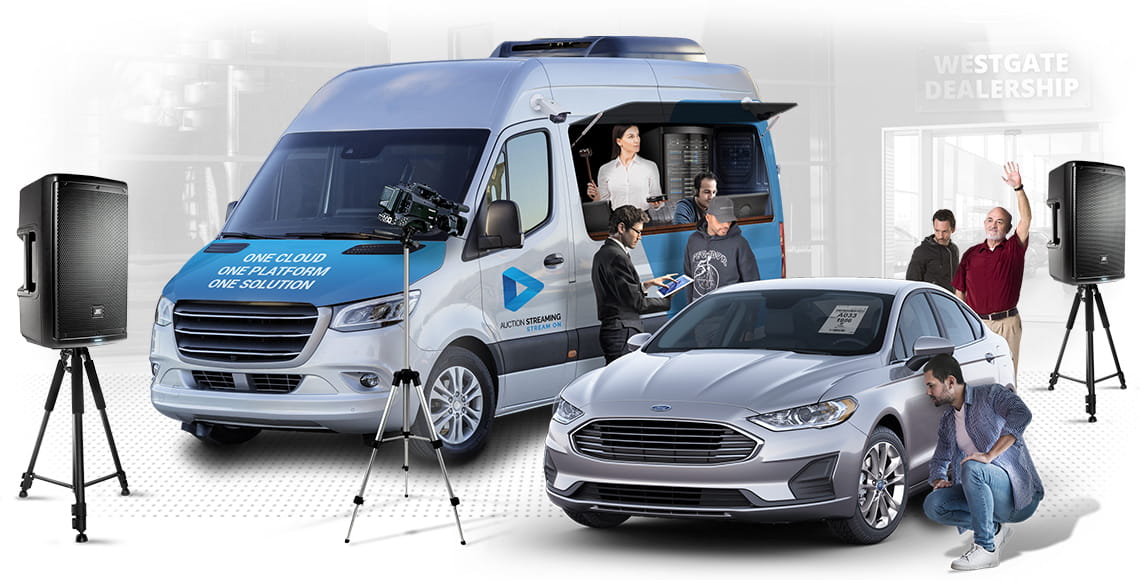What Is a Run of Show and Why It Matters for Live Auto Auctions
July 16, 2025 - 9:57:23 am

The roar of the engine, the fast-paced chant of the auctioneer, the thrill of the winning bid—a live auto auction is an electrifying event. It’s a complex performance with many moving parts, both in the lanes and behind the scenes. But what separates a chaotic sale from a seamless, profitable event? The secret often lies in a powerful, yet simple tool: the run of show.
For anyone in the auto auction world, understanding what is a run of show is fundamental to success. It’s the master plan, the script, and the schedule all rolled into one, ensuring that every moment of the auction is perfectly orchestrated.
Defining the Run of Show: The Auction's Blueprint
So, what is a run of show (RoS)? Think of it as the detailed, minute-by-minute playbook for your entire auction event. It's far more than just a simple list of cars. The RoS is a comprehensive document that choreographs the actions of every single person involved, from the general manager and the auctioneer to the block clerks, drivers, and online support staff.
Imagine trying to direct a blockbuster movie without a script or a shot list. The result would be confusion, delays, and a frustrated audience. The same is true for a live auction. The run of show acts as that script, detailing who does what, when they do it, and what cues they follow. It transforms a potentially disjointed series of individual tasks into a single, synchronized, and professional production.
How the Run of Show Coordinates the Chaos
A successful live auto auction requires flawless coordination between numerous teams handling both physical and digital operations. The run of show is the central document that keeps everyone on the same page and moving in harmony.
Setting the Stage: Pre-Auction Coordination
The event doesn't start when the first car hits the block. The RoS begins long before that, outlining crucial pre-show activities. This includes:
- Staff Briefings: A scheduled meeting where the entire team reviews the RoS, ensuring everyone understands their roles, the day's timeline, and any special circumstances.
- System Checks: Designated times for the tech team to confirm that online bidding platforms, audio-visual equipment, and clerking software are all functioning perfectly. This is where a robust platform like Auction Streaming becomes critical, ensuring the technology is ready to support the event's flow.
- Opening Announcements: The script for the auctioneer's welcome, including reminders about rules, payment procedures, and how to participate both in-person and online.
The Main Event: Executing the Live Sale
This is where the run of show truly shines. During the live auction, the RoS dictates the precise flow of the sale, which is critical for maintaining energy and bidder engagement.
The core of this section is the run list—the specific order in which vehicles will be driven across the block. This order is rarely random; it's strategically planned within the RoS to build momentum, feature key vehicles at peak times, and create a compelling sales narrative.
For each vehicle on that list, the RoS coordinates a flurry of activity:
- Staging and Driving: It cues the drivers on exactly when to bring the next vehicle forward, ensuring there are no awkward delays between lots.
- Auctioneer and Ringmen: It provides the auctioneer with the essential details for each car right when they need them and signals to ringmen when to engage with bidders on the floor.
- Clerking and Admin: It directs the block clerk on when to open and close bidding for each item in the system, capturing the winning bid and bidder number accurately before the next car rolls up.
- Online Bidding: Crucially, the RoS ensures the physical event is perfectly synchronized with the digital one. It dictates the pace so that online support staff can manage digital bids and an online auctioneer can keep remote participants fully engaged, ensuring they never miss an opportunity. A seamless platform makes it feel like online bidders are right there in the room.
The Final Act: Post-Auction Wrap-Up
The work isn't over when the last hammer falls. A thorough run of show includes a plan for post-auction procedures. It outlines the process for final announcements, directs bidders to payment and title windows, and schedules a post-event debrief for the staff to review what went well and identify areas for improvement.
Why a Detailed Run of Show Is Non-Negotiable
Ignoring the run of show is an invitation for error and lost revenue. Its importance cannot be overstated.
First, it creates harmony and eliminates confusion. When everyone knows the plan, they can perform their duties confidently and efficiently. This professional execution builds trust and credibility with both buyers and sellers.
Second, it dramatically enhances the bidder experience. A smooth, well-paced auction is enjoyable for bidders. Long delays, technical glitches, or disorganized staff can make buyers frustrated and less likely to bid. A predictable and energetic flow, guided by the RoS, keeps bidders engaged and confident, whether they are on-site or bidding online from hundreds of miles away.
Finally, it maximizes efficiency and profitability. A tight run of show ensures you get through your entire vehicle inventory in the allotted time. It helps maintain the auction's energy, which is proven to keep bids higher. By preventing lulls and errors, you minimize lost opportunities and maximize the final sales prices for your consignors.
In today's fast-paced auction environment, the run of show is more than just a schedule—it is the very foundation of a modern, successful, and profitable live auto auction. By leveraging sophisticated software solutions to build and manage a dynamic RoS, auction houses can ensure every sale is a command performance.
To get more insights visit our Blog page!
